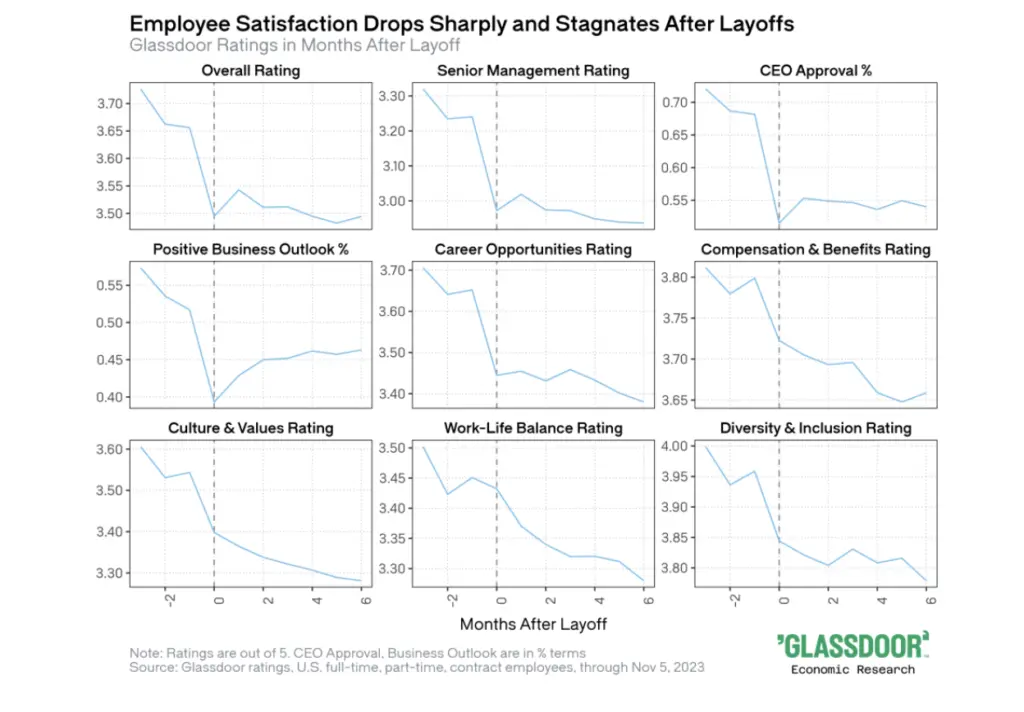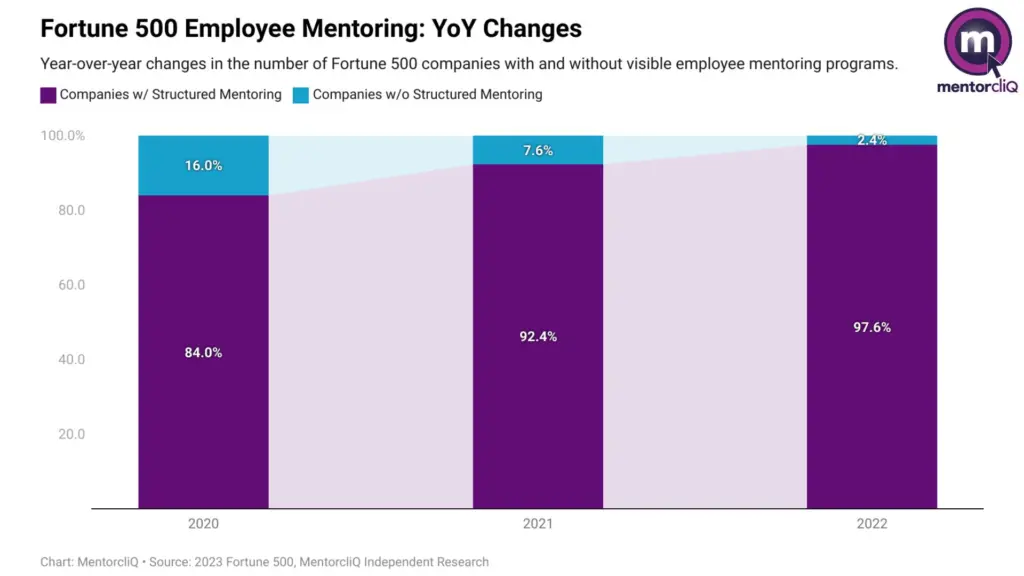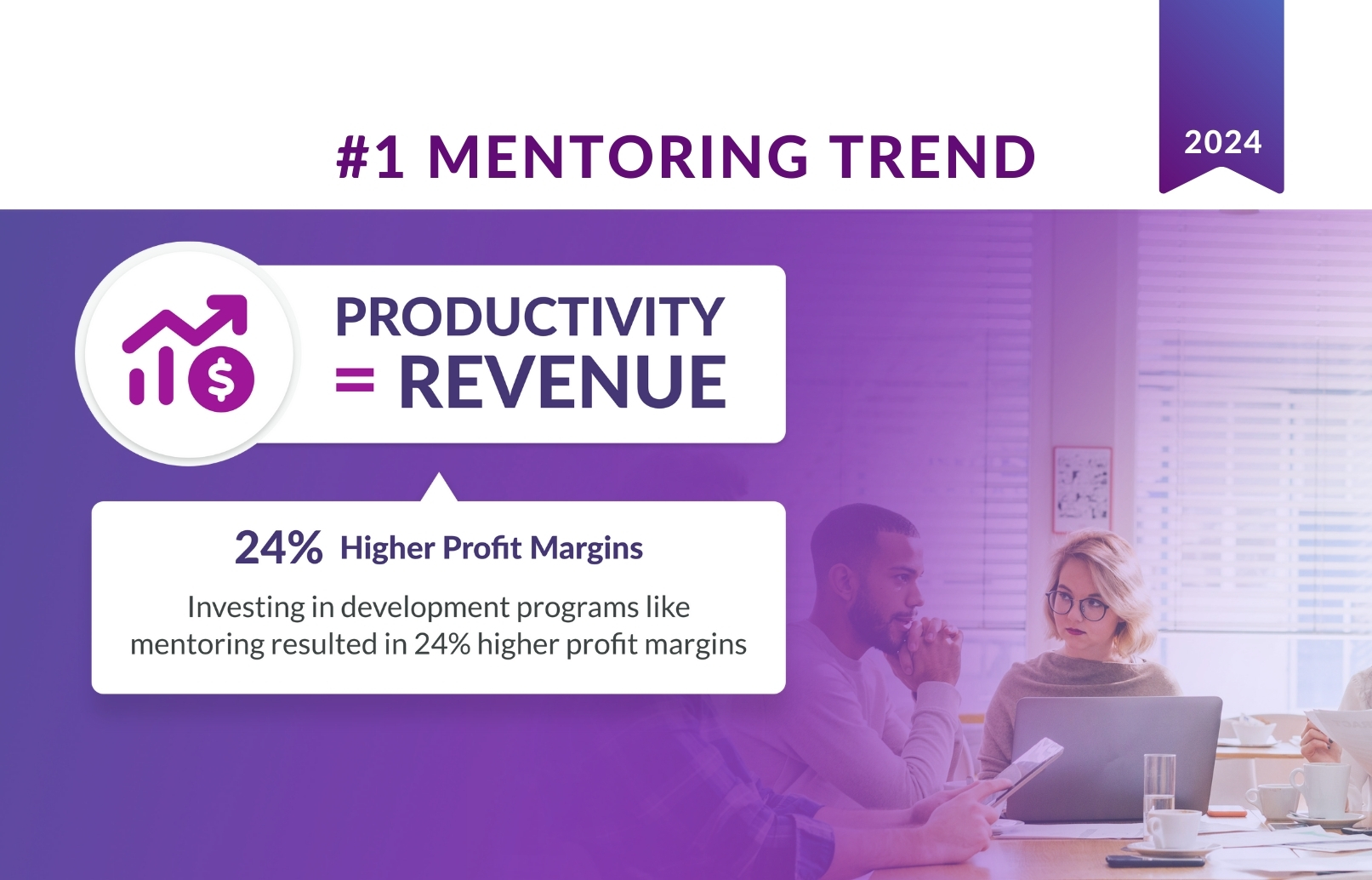Employee engagement is at a 9-year low. Workers are distracted and distanced in a way that negatively impacts productivity and, ultimately, revenue and profitability. Traditionally, companies have responded to situations such as these cost-saving measures that include layoffs, suspension of or delayed salary increases, and a reduction in employee engagement and development programs.
Why Is Declining Engagement a Problem for Enterprises?
New data shows nearly 50% of employees are open to leaving their jobs right now. You can backtrack this in several ways:
- Employees are mentally and emotionally distracted
- They’re significantly less satisfied and less engaged
- As a result, employees have grown less productive
Many HR leaders were relieved to see the end of The Great Resignation, only to be blindsided by the latest employee disengagement trend, The Great Gloom. This new season is marked not by the sky-high quit rates we saw in 2022 but by historically rock-bottom employee engagement, job satisfaction, and productivity rates.
This trend shows no signs of stopping into 2024. Many industry experts have noted its impact on employee productivity and will continue unless you take action.
Focusing on what you can control as an HR, Talent Development, and/or DEI Professional involves refocusing on employee engagement, skill development, personal and professional connections, and company culture. We are seeing a move toward cost-effective and holistic engagement strategies like mentoring that can help reverse productivity declines.
Is Declining Engagement Unique to My Company/Industry?
Everywhere you look, low productivity seems to be an exceptionally hot topic. It’s not your imagination.
In 2022, Google recorded 101,000 pages about “employee productivity,” which includes blog posts, website landing pages, social media posts, and forum discussions. In 2023, that number climbed to 223,000, a 120% increase.
Everyone’s talking about employee productivity because everyone’s struggling with low productivity right now.
There’s some comfort in that. The feeling that is just you can be overwhelming and defeating, especially when you feel your hands are tied by executive-level and economic decisions beyond your control. A key reason why our mentoring community is both growing and active is for that very reason: HR, Talent Development, and DEI leaders want to be assured that these problems are not just theirs alone and want to know what others are doing about them.
Increasingly, they’re discovering that mentoring has become a secret weapon to stave off productivity declines by increasing employee engagement, development, job satisfaction, and connection.
You Can’t Control the Mandates, But You Can Bridge the Gap
Productivity is the primary driver behind the “return-to-office” trend we’re seeing right now. Many bosses are blaming remote work for low productivity. Yet, during the height of the global pandemic, when remote work was at a historic high, productivity rose in states with a high percentage of remote workers.
- Fact: Return-to-office (RTO) policies are completely beyond the control of HR, Talent Development, and DEI leaders.
- BIGGER Fact: The employee experience outcome is completely within your control.
The popular blame game among many executives right now is to pin low productivity on remote work. That’s increasing negativity among workers and contributing to lower productivity. Yet with a creative approach, mentoring can put a positive spin on these policies.
Mentoring allows employees to:
- Connect in authentic relationships in any work environment, be it remote, hybrid, or in-person
- Develop deeper connections across the organization through scientific-based matching designed to increase the likelihood of positive outcomes
- Take more control over their personal and professional development and growth
Even as employees feel something is being taken away from them, mentoring allows them to regain a significant aspect of freedom and personal growth they feel was lost with return-to-office. With a structured and thoughtful approach, it’s more than just throwing employees a bone. It’s providing a developmental structure that exceeds what they were capable of accomplishing on their own.
If properly mounted to return-to-office policies, mentoring can also add a significant amount of weight behind company mandates — as long as the solution is decidedly data-driven and verifiable to both employees and executive leaders.
Mentoring addresses the 2 other root causes of today’s low productivity
The employee engagement ecosystem can be complex, but there are 3 key factors influencing low productivity rates right now inflation and layoffs.
It may be hard to believe, but HR leaders can create solutions for these problems without having to fight the problems themselves.

For example, employees are often willing to eschew higher pay in exchange for an investment in upskilling. LinkedIn found that 94% of employees are willing to stay longer at a company if it invests in professional development.
Properly scaled mentoring programs help companies offer professional development opportunities that leverage internal knowledge and allow for more personal agency over learning goals.
Launching or expanding mentoring programs within an organization in 2024 sends an important signal to employees that their company is actively investing in employee engagement and connection instead of just trying to reduce costs.
The longer you retain talent, the better they become. This ultimately creates a scenario where your internal talent network is your signal best resource for employee development and growth, as you can leverage that network to upskill, reskill, and grow new and tenured employees, even without relying solely on wage increases.
Mentoring Treats the Underlying Needs Behind Low Productivity
You can address multiple issues dragging down productivity with a cost-effective solution that’s easily scaled across the organization. Mentoring will continue to be a go-to strategy enterprises turn to that has proven to increase employee engagement and productivity and impact the bottom line.
MentorcliQ’s 2024 Mentoring Impact Report shows that 97% of U.S. Fortune 500 companies now have mentoring programs, a huge increase from the 84% in 2021.

Companies that have found the most success at generating revenue and retaining employees also see value in mentoring as an engagement and development strategy.
Profitability is more necessary than ever. Productivity is at a premium, but many of the obvious levers to increasing profits in the short term negatively impact productivity for a longer period of time.
You can’t increase wages or promote folks if you are doing layoffs, but what folks are really concerned about is being considered expendable. That’s does double damage to productivity; not only is the juice no longer worth the squeeze (even more so if one is picking up extra work from someone that was made redundant), but fear also eats at people and causes them to disengage.
In 2024, employees need reassurance that they matter and a tangible approach that addresses their need for personal and professional development. Mentoring will continue to fill that need.
A Peek Behind The Curtains of Success
There are hundreds of success stories we could highlight that exemplify the value of looking at productivity differently. One particular story rose to the top as a solid example of why people-first approaches to engagement and development result in better outcomes on productivity and revenue generation.
In 2023, Fortune 500 company Henry Schein stared down several negative trends by ignoring the noise and focusing on personal, professional, and cultural development strategies that continue to produce winning results.
Here are three things Henry Schein did that one might consider “counter-cultural” but that is entirely in line with the people-first approach:
- Leveraged MentorcliQ’s software to expand formal mentoring to 10,000 employees
- Grew its number of mentoring program participants by 525%
- Maintained remote work for employees
- Increased YoY revenue through Q3 2023
While many companies saw their revenue dropping, Henry Schein’s leadership continued to see value in mentoring. This approach is also part of the company’s culture, flowing from the executive leadership and exhibited throughout the organization.
The Clock Is Ticking on 2024 Goals
Over 70% of companies follow a January to December fiscal year. For most companies, the clock is already ticking to ensure you increase productivity in a way that positively influences revenue and profits. With an agile approach paired with automated software that simplifies the launch processes, quickens and streamlines matching and program engagement, and quickly visualizes success data, companies lift productivity in meaningful ways.
With many executive teams laser-focused on bringing people back to the office to increase productivity, HR, Talent, and DEI leaders must step in to call foul. Return-to-office policies are not the solution to productivity woes; employee engagement and development are, while mentoring has proven to solve the underlying needs employees desperately seek.




